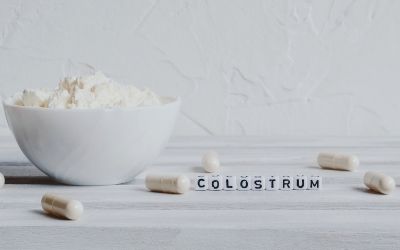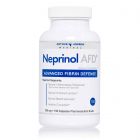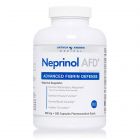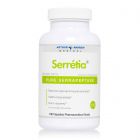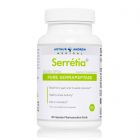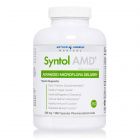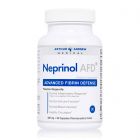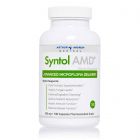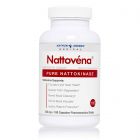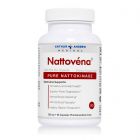Probiotics vs. Prebiotics: Differences, sources and benefits
- By Patrick McCarthy (MSc)
- 17 Apr 2022


We have all watched as probiotic foods and supplements have exploded in popularity over the past couple of years.
A good example of a probiotic drink is Kombucha. This is a direct result of increasing research and knowledge around the importance of the gut microbiome, the millions of bacteria that live inside our digestive tract.
But still, a lot of people do not truly know the true nature of probiotics, and how they differ from prebiotics. In this article, I will help break down these topics.
What is the gut microbiome?

The microbiome is a diverse web of bacteria, viruses, pathogens and microbes that live (yes, I said “live”) inside our bodies and provide a range of essential functions (Source: NCBI). You may hear both the terms “microbiome” and “microbiota” used interchangeably.
Microbiome is the term given to the collection of different genomes (genetic makeup) of the different organisms, while microbiota refers to the collection of a specific species. Think of a Jungle ecosystem, the microbiome is similar to the different species (lions, tigers, snakes, insects, etc.), while the microbiota is the total collection of all the animals.
It is estimated that up to 1 trillion microorganisms are present in a healthy microbiota (Source: BMJ). Many of these are beneficial organisms that help to protect against harmful pathogens and invaders.
What is the difference between prebiotics and probiotics?

Until I went and studied nutrition, I was always under the impression that the terms prebiotics and probiotics were interchangeably used. This is certainly not the case, so allow me to clear things up.
Prebiotics are different fibres that act as food for the bacteria in our gut (think of “pre” as the food needed for the organisms to thrive). On the other hand, probiotics are direct strains of bacteria present in fermented foods that can contribute to bacterial diversity directly once consumed.
Both of these can provide benefits for improving the biodiversity of our microbiome and microbiota.
What foods contain prebiotics?

As mentioned, prebiotics is naturally present in many different foods, as they are simply indigestible fibres that provide food for our gut bacteria. The main prebiotic components are fructooligosaccharides, inulin, and galactooligosaccharides (Source: NCBI).
You can also take them in targeted supplemental form, but it is always helpful to know the different foods too! Prebiotics are present in different plant-based foods including:
- Sauerkraut
- Asparagus
- Artichokes
- Pineapple
- Onion
- Garlic
- Oatmeal
- Bananas
It is important to consume a variety of these because different bacterial species rely on different prebiotic fibres.
What foods contain probiotics?

Probiotics are the actual live bacterial organisms that are present and carry out beneficial roles in the body.
You can find probiotics in the following foods, present as Bifidobacterium and/or lactobacillus:
- Yoghurt
- Kimchi, tempeh and sourcrout
- Kombucha
- Kefir
- Cultured drinks (Yakult, Actimel)
- Probiotic supplements
Which is better? Probiotics or Prebiotics?
Neither. Our body needs both to maintain our gut health. Remember that probiotics and prebiotics need each other. Probiotics are the live good bacteria that add to the pre-existing ones in your gut.
On the other hand, prebiotics is plant fibers that are good bacteria and stimulate the growth of your gut microbiome.
Are probiotic supplements beneficial?
May help those with digestive-related issues
If you suffer from gas, bloating, IBS or any other digestive-related issue, your physician may have recommended a probiotic supplement.
May help support immune health function
These can help to modulate (support) immune function while helping to eradicate pathogen replication in the gut.
There are several different types of bacterial strains that are incorporated into probiotic supplements. You want to make sure that there are the main and most common families including Bifidobacterium and lactobacillus (Source: BMJ).
Takeaways
As always, it is a good idea to round out this article with a couple of practical takeaways. Below are important points to remember, but you should always try and hold on to the context surrounding each point too, because they can sometimes be misunderstood.
- The microbiome is made up of numerous bacterial species and a healthy microbiome has up to 1 trillion organisms.
- Prebiotics are fermentable fibres that provide food for the bacterial organisms in the GI tract. These are not all created equally and you should ensure that you’re consuming a variety of fruits and vegetables to ensure you are consuming the different types.
- Probiotics are live bacterial organisms that are added to food products and can provide a host of benefits when consumed regularly
- Supplemental probiotics can provide concentrated doses of bacterial strains including Bifidobacterium and lactobacillus, which may enhance GI health and function.




